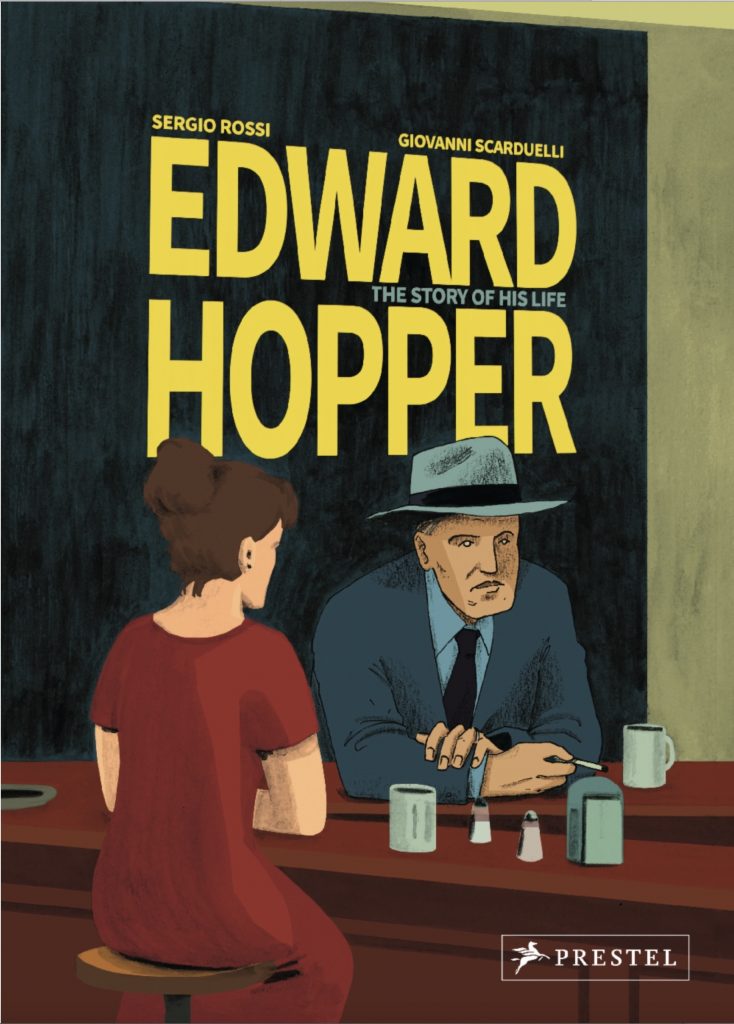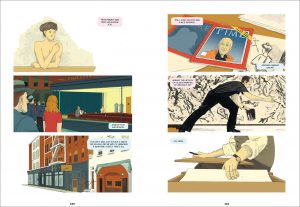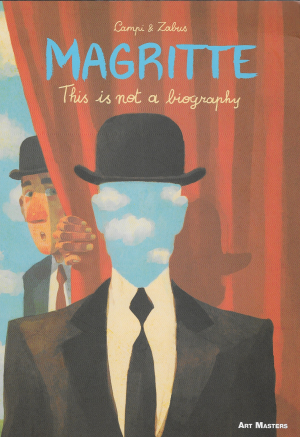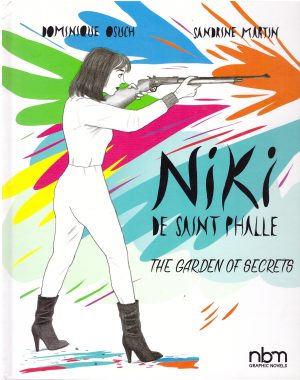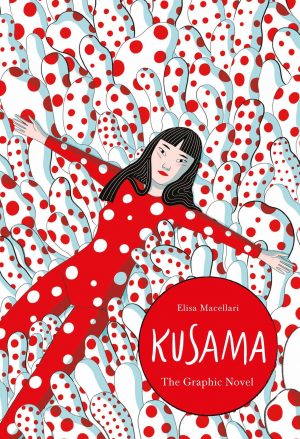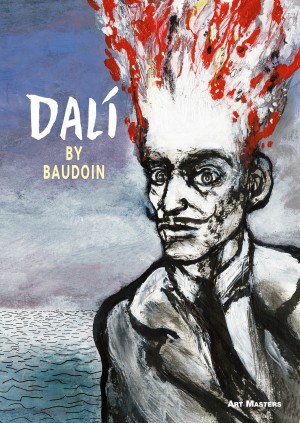Review by Graham Johnstone
Edward Hopper’s Nighthawks is one of the most recognisable 20th century paintings, so many readers will spot the cover homage, although Giovanni Scarduelli hasn’t simply recreated the painting, he’s remixed it. Hopper’s two figures sitting side-by-side are based, the book tells us, on the painter and his wife Josephine. Scarduelli movers the viewer closer to the couple, yet, moves Jo round the corner, so distancing them from each other. She looks at Edward, while he looks away. It’s a smart teaser of the lives behind the famous paintings.
An introduction by the creators explains their approach. Hopper had an unremarkable life, and dismissed critical interpretations of his work, so writer Sergio Rossi wisely focusses on the art, and lets Hopper speak for himself. Weaving the subject’s pronouncements on his work into a discussion with his wife/manager Jo, adds a welcome further perspective.
Opening chapter ‘From Nyack to New York’ captures the conservative background that shaped the artist’s worldview, before introducing the teachers and fellow students who influenced his work. Hopper’s paintings evoke mid-century America, so ‘On Both Sides of the Atlantic’ offers a perhaps unexpected glimpse of the emerging artist in Paris at the birth of Modernism. Tellingly, Hopper was sceptical of the art, but inspired by the city, citing an orderliness and attention to detail that would later characterise his work.
‘Blue Evening’ plays out the transatlantic tension through Hopper’s two contributions to a 1915 exhibition: Paris cafe scene ‘Soir Bleu’ (suggesting the chapter title), and ‘New York Corner’. This was a pivotal moment for Hopper, meriting extended coverage here. Scarduelli’s cinematic sequence of Edward walking home with a rolled-up canvas, is captioned with the Hoppers’ analysis of the critical reaction, and intercut with visualisations of their thoughts. It’s elegantly handled, and Rimbaud’s poem of the same title feels an apt inclusion. However, musings on Edward’s inclusion of a soliciting woman feel too lengthy a digression. We never see the Paris painting, implicitly on the rolled-up canvas that Edward hides in his wardrobe. That makes poetic sense, as it reflects Hopper’s decision, but in a book that cover features its subject’s paintings, it’s odd that we don’t see the praised ‘New York Corner’, as it sets his future course.
‘Behind Closed Doors’ grows from another pivotal moment, a trip to Gloucester, Massachusetts, where Edward met both his future art dealer, and his future wife. Edward, and Josephine Nivison studied art together without connecting, and their mid-life romance coincided with his immediate success, or perhaps enabled it. Jo’s contribution to his work might be a book in itself, so her acknowledgement is welcome. She sacrificed her own art career to support his, modelled for most of his paintings, and conceived titles, like ‘Nighthawks’, contributing much of the ‘poetic’ in his realism.
Similarly, we don’t know the balance of Matteuzzi and Scarduelli’s contributions to their visualisation. We see their subjects as they talk, highlighting Jo’s poses for Edward, and Hopper-esque views of their home. Woven into this are richly remembered or imagined scenes, and symbolic images, showing, say, Hopper and Jackson Pollock as “two poles of American art”. Scarduelli, though, surely takes the credit for the compositions and palettes convincingly evoking his subject. However credit is split, their book brings to life the couple behind the paintings. It’s hard to imagine a better biography in this number of pages.
